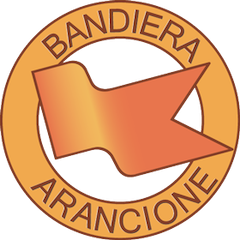THE ISLANDS
The islands of Lake Bolsena
Within the lake of Bolsena there are two islands: Martana and Bisentina. Both have been inhabited since ancient times to the Bronze and Iron Ages, they were later colonized by the Etruscans, then by the Romans and became two important outposts during the medieval period.
Bisentina Island
The Bisentina island is one of the main tourist attractions for those who go to Capodimonte. This is connected with the village with a boat service that leads to the island several times a day. Here there are numerous monuments including the church of Santi Giacomo and Cristoforo del Vignola, characterized by the presence of a majestic dome, the Franciscan convent, the valuable Rocchina and the temple of Santa Caterina designed by Sangallo. The island was inhabited in the 9th century when the coastal populations took refuge there to escape the Saracen raids. In the mid-1200s it became the property of the lords of Bisenzio who, following disputes with the islanders, set it on fire and then abandoned it. In 1261, Pope Urban IV reconquered this strip of land, which in 1333 was again destroyed by Ludovico il Bavaro. Bisentina then became the property of the Farnese family starting from 1400 and experienced a period of great prosperity. In 1635 it was ruled by the Duke of Castro, Odoardo Farnese, who came into conflict with the church which ended with the destruction of the city of Castro and the dismemberment of the duchy.
Following this event, Bisentina returned under the control of the church. Currently the island is privately owned.
Martana Island
The Martana island is located in front of the town of Marta, from which it is about 2 kilometers away. This strip of land located in the middle of Lake Bolsena has a particular shape reminiscent of a crescent, Martana is actually the emerging part of a volcanic crater covered by water over the centuries. Tradition has it that they were hidden on the island in 410 AD. the remains of Santa Cristina, hidden there to save them from the barbarian invasions. Another legend tells that during the rule of the Goths, Queen Amalasunta was segregated there and then barbarously killed by a hitman on the orders of her cousin and consort Theodatus. According to historical findings that have come down to us, Martana was mentioned for the first time in an official document in 852 AD. inside a papal bull that spoke of the convent of S. Stefano, still present. During the Saracen invasions of the 9th century, the island was the refuge of fleeing coastal populations. These founded a small town which later became an independent municipality. Count Guittone di Bisenzio in 1254 had himself nominated podestà of the island, but his desire for power was unwelcome by the population who gradually dispersed. In turn, the lords of Bisenzio were forcibly expelled from the church, which maintained the sovereign rights over Martana until the advent of the Duchy of Castro. After the destruction of the Farnese kingdom, which took place in 1649, both Martana and the nearby Bisentina returned to be part of the Papal States.
Even today on the island there is an ancient convent that it has over the centuries hosted various orders of monks: the Benedictines, the Augustinians and the Paolotti. The monastery was completely abandoned in 1459. Martana then became private property around the middle of the twentieth century and still belongs today to a company that manages it. Disembarkation on the island by boat is allowed only with the permission of the current owners.


